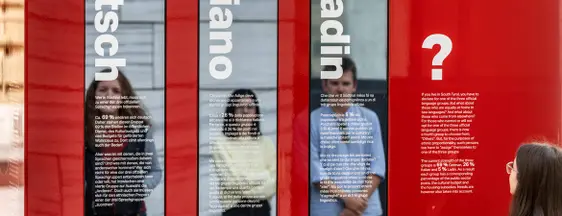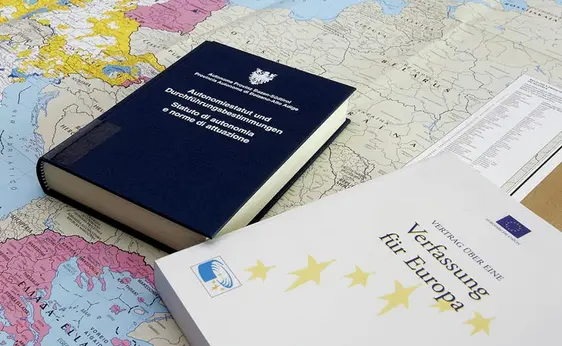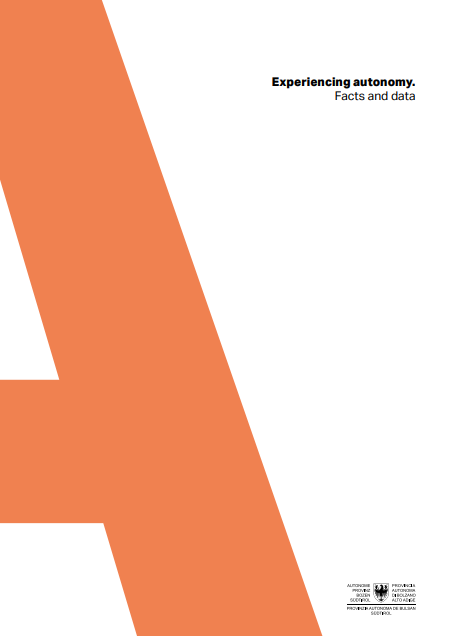South Tyrol's autonomy
Discover South Tyrol's unique autonomy, where three languages and cultures coexist harmoniously.
One region, three languages: German, Italian and Ladin

German language
German speakers are the largest group in the population. This goes back to the Germanic, Alemannic, and Bavarian tribes. They crossed today's South Tyrol during the Migration Period. Some of them settled in the region. Even today, locals use the South Tyrolean dialect instead of High German in daily life.
Italian language
Italian is the second largest language group. It grew a lot in the 1920s and 1930s during the Fascist era. Mussolini wanted to "Italianise" South Tyrol. He encouraged many people from Southern Italy to move there. Italian is a new language in cultural and historical terms.
Ladin language
The Ladin language group is the oldest in the region. Ladin is a neo-Latin or Romance language. It's also called Rhaeto-Romance. After the Roman conquest of the Alpine regions in 15 BC, the people adopted the Latin spoken by officials and soldiers. They also kept their own language.
Rules for harmonious coexistence

The three ethnic groups can only harmoniously exist within a political system when:
- The needs of all groups are acknowledged.
- And a balanced relationship is guaranteed.
The three language groups in South Tyrol live together. This is possible because of a complex legal system. The system ensures:
- Language equality.
- Cultural autonomy.
- Reserved positions.
- And proportionality.
It applies to government, public jobs, and funding.
Autonomy in South Tyrol: what does it mean?
Autonomy is defined as a statute-based framework that allows for comprehensive political self-government within a sovereign nation. This means a greater degree of responsibility for numerous functions compared to any other Italian province.
For further information, please visit the Autonomy landing page.
The road to autonomy in South Tyrol

South Tyrol’s autonomy is based on three fundamental documents.
- The Paris Treaty (1946).
- The Italian Constitution (1948).
- The Second Statute of Autonomy (1972).
After World War II, South Tyrol remained part of Italy. The victorious powers, however, stipulated that this was conditional on full protection of the German-speaking Austrian minority.
This led to the Paris Treaty or Agreement between Italy and Austria, which defined the framework of autonomy. The treaty forms the international safeguard for South Tyrolean autonomy.
Article 6 of the 1948 Italian Constitution recognises and protects historical linguistic minorities, including the Ladin and German communities.
The Second Statute of Autonomy
The Second Statute of 1972 granted South Tyrol regional status. It was granted greater autonomy than a typical Italian region.
Historical information about South Tyrol
For more historical information, see the timeline The road to autonomy.
Please refer to the websites below to learn more:
- Autonomy Experience South Tyrol - Eurac Research
- Autonomy Portal (in German, Italian and Ladin)
- The Autonomy Dashboard South Tyrol
- Understanding Autonomy (the podcast on autonomy and minority protection in South Tyrol)
- Policy Brief: The autonomy of South Tyrol in 2024
For more details, please contact the Center for Autonomy Experience.
Wir. Noi. Nos. (English)
South Tyrol's Autonomy and Minority Protection.
Experiencing autonomy

Facts and data
South Tyrol in figures; One land, three languages; Recent history; Autonomy; Budget.
Download Read onlineLast updated: 26/11/2025
